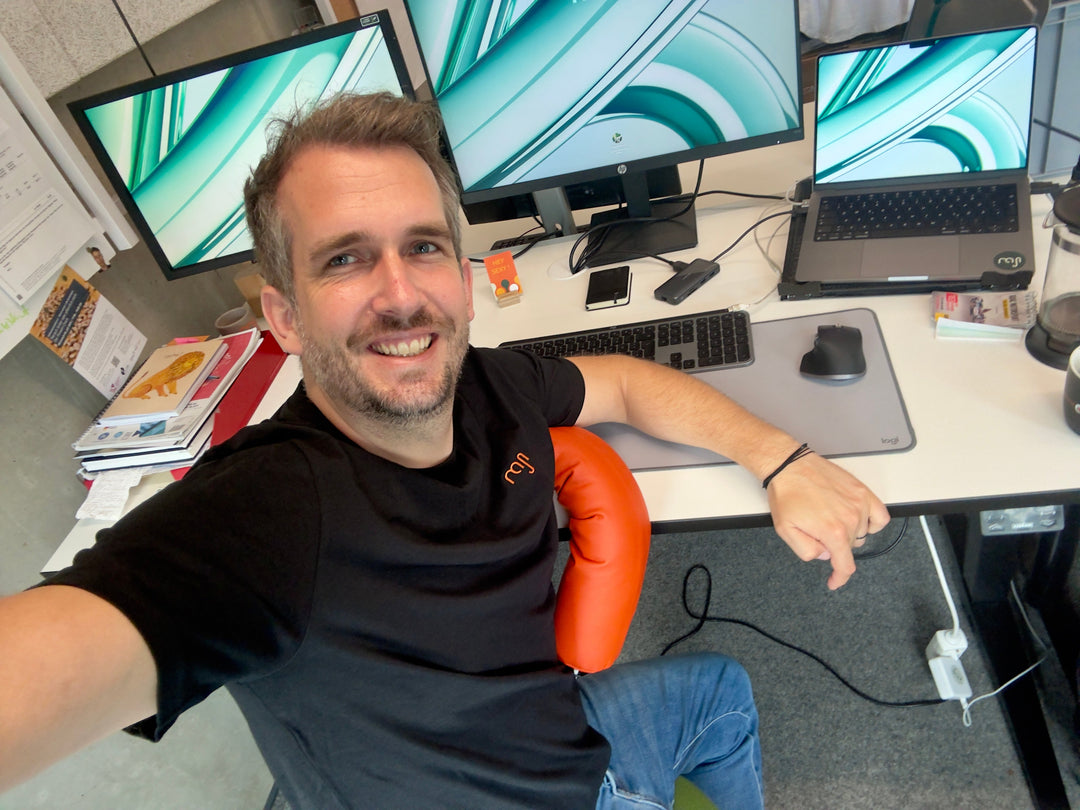Mens sana in corpore sano – A Healthy Mind in a Healthy Body

The harmonious balance between mind and body is crucial for productivity.
It’s well known that ergonomics plays an important role in achieving this balance. However, in today’s world, the challenge lies in implementing ergonomics more effectively amid ever-growing demands on work environments. Workspaces are no longer limited to familiar settings designed solely for productivity. Instead, they now extend to new places not originally intended for work. This poses a significant challenge in the ongoing transformation of work culture toward hybrid work models. Employers must address this task because providing a healthy work environment through customized equipment for employees is a vital part of occupational safety. Such an environment can help prevent both physical and mental health issues, thereby boosting productivity and employee satisfaction. This is particularly critical in light of the current skills shortage, as appreciation from employers is a key factor in retaining talent over the long term.
Work Life Balance? Work Life Blending!
The trend toward “work life blending” has blurred the lines between work and personal life. Office work no longer happens solely in a designated space but also in various locations and at different times. This is what we call “hybrid work.” The term comes from the English “Hybrid Work” and describes a working style where one can switch between different modes of work. Hybrid work holds the potential to offer a balanced solution in the long run—especially because it can be segmented into different models depending on the degree of temporal and spatial flexibility available. However, it’s challenging to remain productive if the environment isn’t ergonomically designed but instead is plagued by both physical and mental distractions. Determining whether a space is suitable for work involves, in addition to ergonomics, evaluating its cognitive (Is it easy to use?), emotional (Does it feel pleasant?), and motivational (Does it allow room for personal growth?) properties.
To meet the demands of location independence, it’s essential to recognize and implement the power of efficient ergonomics.
What is Efficient Ergonomics? – A Definition by MAJI
Efficient ergonomics refers to the implementation of a product and service offering that is tailored to individual ergonomic workplace optimization. In the context of the hybrid work trend, efficient ergonomics offers a solution to the dilemma of working in environments not designed for it—a situation that can lead to long-term health issues. It is not economically feasible to adapt every environment accordingly. Instead, products must be developed that allow users to temporarily modify their surroundings to meet varying needs. The relationship between people and space is a central aspect here. On one hand, we have individuals as tangible beings whose behaviors and needs must be directly incorporated into the product development process. On the other hand, space should not be viewed merely as a container, but as an environment shaped by human presence. The design of a space is influenced by social interaction—from the simple arrangement of objects and people to the emotional perception of the space through cognitive synthesis (Löw, 2013). Products must consider users’ needs and behaviors while simultaneously offering adaptability to various settings. Their success depends on the degree of affordance of the respective product.
A Brief Dive into Affordance by James J. Gibson
Affordance describes the natural perception of possibilities for action in an environment. It means that objects or surroundings provide cues on how they can be used without needing explicit instructions. For example, a doorknob indicates that you can open the door, and a staircase suggests that you can move from one level to another. Affordance helps us intuitively understand how to interact with our environment based on its properties and our past experiences.
In this context, the adaptability of furniture and equipment is becoming increasingly important to support modern work styles, particularly for Generation Z, who are now the primary users. Traditional metrics such as productivity are now complemented by considerations of health and individuality, influenced by Gen Z’s values. These new demands are reshaping the spectrum of needs in work environments, leading to a holistic transformation (Esmailzadeh et al., 2022a). Conventional furniture and objects often cannot meet these new requirements because they are either fixed in place or serve only specific functions. Instead, products should be designed with flexibility—similar to modern gadgets that adapt seamlessly to various work settings.
The Will to Change Matters
The challenge lies in encouraging users to break away from old habits with new, sometimes unconventional products that act as catalysts for change. This can be difficult because it is human nature to be skeptical of the unknown and not immediately recognize that an improvement is necessary. Efficient ergonomics appeals by aligning with eco-friendly thinking and addressing the changing interactions within a system—in this case, work environments.
Products should be designed to be patient, gradually encouraging users to adopt new ways. Once the initial resistance is overcome, a transformation phase begins where new behaviors become established. Users can benefit from this change by claiming temporary zones in public areas and adjusting them to their needs. They can treat these spaces much like their own private environments, which includes ergonomic preferences crucial for maximum productivity (Ricken, 2004).







Leave a comment